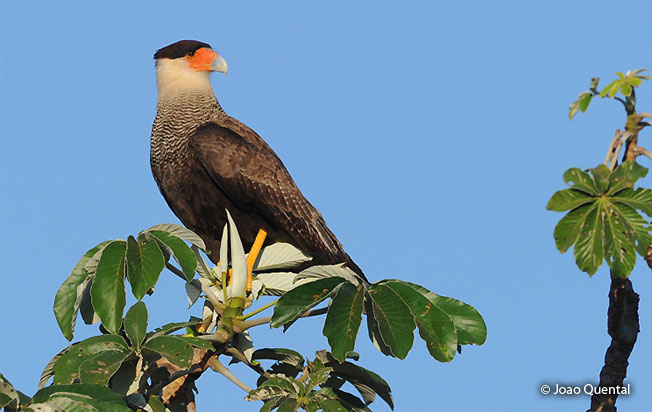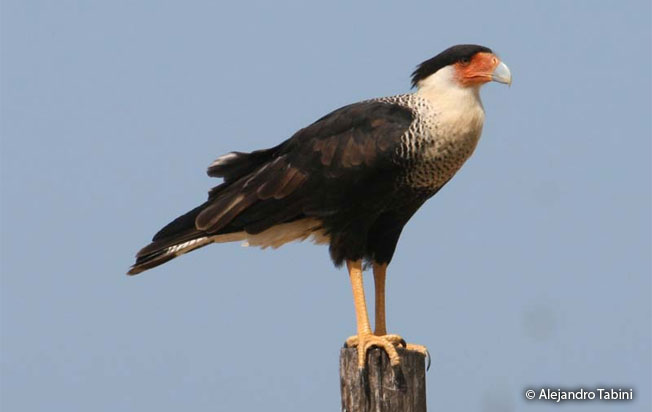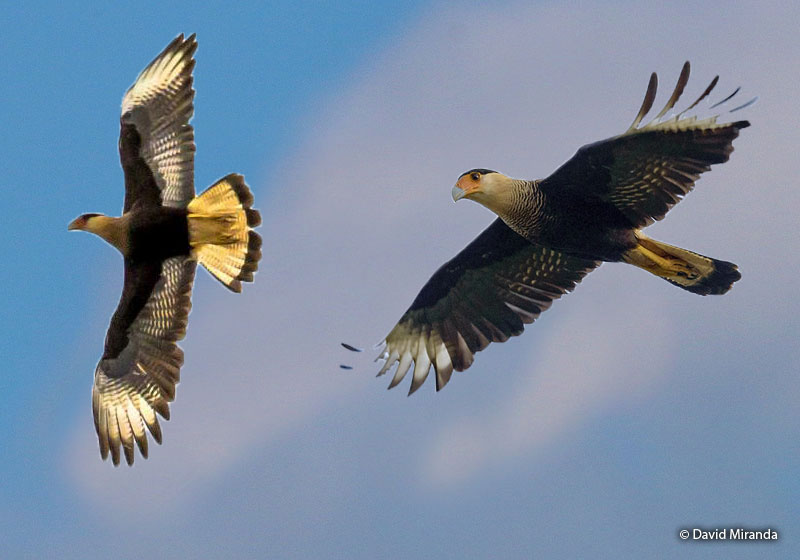Order: Falconiformes | Family: Falconidae | IUCN Status: Least Concern

Age: Adult | Sex: Unknown | Loc. Southwest Brazil

Age: Adult | Sex: Unknown | Loc. Northwest Peru

Age: Adult | Sex: Unknown | Loc. Norththwest Peru.

Age: Adult | Sex: Unknown | Loc. Southwest Brazil
Status: The Crested Caracara is fairly common in northwest Peru but uncommon to rare in the open habitats of extreme southeastern Peru in Pampas del Heath. It appears to be increasing in the Puerto Maldonado area and along large rivers in Southeast Peru. It also occurs in Br, Bo and Ch.
Name in Spanish: Caracara Crestado.
Sub-species: Crested Caracara (Caracara plancus plancus), J. F. Miller 1777. Mostly on the southern half of South America. (Caracara plancus plancus cheriway), Jacquin 1784. E. Panama and North South America to Northern Peru and Brazil.
Meaning of Name: Caracara: Tupi (Brazil) Caracara= indigenous onomatopoeia for the sound emitted by this bird in the Falcons family. plancus: L. plancus, plangos= eagle.
 Voice
VoiceReferences:
-
- Species range based on: Schulenberg, T. S., D. F. Stotz, and L. Rico. 2006. Distribution maps of the birds of Peru, version 1.0. Environment, Culture & Conservation (ECCo). The Field Museum. http://fm2.fieldmuseum.org/uw_test/birdsofperu on 08/01/2015.